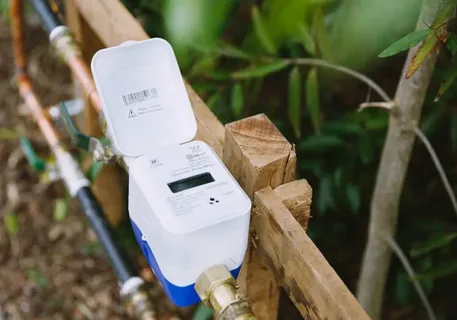How Smart Water Meters Are Shaping Sustainable Water Management

Introduction
The Smart Water Meter Market is expanding rapidly as utilities, municipalities, and residential consumers adopt intelligent water management technologies to improve accuracy, reduce leakage, and enhance billing efficiency. Smart water meters use sensors and communication systems such as AMI (Advanced Metering Infrastructure), AMR (Automated Meter Reading), IoT, and wireless networks to monitor water consumption in real time. They enable automated data collection, remote monitoring, leak detection, and data-driven water distribution management. With rising concerns over water scarcity, aging water infrastructure, and non-revenue water losses, smart water meters are becoming a strategic investment for modern water utilities. They help minimize manual intervention, increase transparency, improve customer service, and support sustainability goals. As cities transition toward smart infrastructure and digital utilities, smart water metering is becoming central to efficient water resource management.
Market Drivers
Increasing global water scarcity and the need for sustainable water usage are key growth drivers. Utilities are under pressure to reduce non-revenue water losses caused by leakage, theft, and inaccurate billing—smart meters provide real-time visibility to address these issues. Digital transformation of water utilities and rising adoption of smart city initiatives further accelerate the market. Governments and regulatory bodies encourage smart metering to ensure equitable billing, conservation, and infrastructure modernization. Improved customer engagement through transparent consumption data and self-service portals enhances demand. Integration of IoT, AI, and cloud analytics enables predictive maintenance, leak alerts, and optimized water distribution. Additionally, rising labor costs and challenges associated with manual readings support the transition to automated metering systems.
Market Challenges
High upfront investment for smart meter deployment and infrastructure upgrades is a significant barrier, especially for small utilities and developing regions. Integration complexity with legacy systems and the need for supporting communication networks can slow implementation. Data privacy and cybersecurity risks associated with connected meters require strong protective measures. Interoperability issues across multiple meter brands and communication protocols may create system compatibility challenges. Maintenance and battery life of meters can impact long-term operational costs. Resistance from consumers due to privacy concerns or unfamiliarity with digital metering systems may affect adoption in some markets. In rural regions, connectivity constraints limit the feasibility of advanced AMI solutions.
Market Opportunities
Advancements in IoT and LPWAN technologies—such as NB-IoT, LoRaWAN, and 5G—provide growth opportunities for cost-efficient, long-range connectivity. Development of smart leak-detection analytics, automated valve control, and water quality monitoring can enhance product value. Prepaid smart meters offer new business models for developing markets, improving revenue collection and consumption control. Subscription-based or Metering-as-a-Service (MaaS) models allow utilities to deploy meters with reduced upfront costs. Integration with smart home ecosystems via mobile apps can enhance consumer engagement. Data analytics platforms for demand forecasting, smart billing, and infrastructure planning provide additional revenue streams. Sustainability-focused retrofitting solutions to convert conventional meters into smart meters can accelerate adoption.
Regional Insights
Europe leads the Smart Water Meter Market due to strong regulatory mandates, sustainability goals, and widespread adoption of AMI technologies. The UK, Germany, France, and the Nordics show high deployment rates. North America follows closely, driven by water conservation policies, smart city programs, and replacement of aging infrastructure, particularly in the U.S. and Canada. Asia-Pacific is the fastest-growing region, fueled by rapid urbanization, large-scale smart city investments, and government-led digital utility reforms in China, India, Japan, South Korea, and Australia. The Middle East shows increasing adoption driven by water scarcity concerns and modernization initiatives, particularly in UAE and Saudi Arabia. Latin America and Africa present emerging opportunities as governments work toward reducing water losses and improving utility efficiency.
Future Outlook
The future of the Smart Water Meter Market will be shaped by digital water ecosystems with AI-enabled analytics, intelligent leak management, and automated distribution control. Hybrid metering infrastructures integrating AMI, IoT, and edge computing will enable faster and smarter decision-making. Battery-efficient and self-powered meters using energy harvesting technologies will gain traction. Interoperability standards and open architecture platforms will make deployments more streamlined and vendor-flexible. Water utilities will transition from reactive to predictive water management, using data-driven insights to improve service quality and sustainability. Over the next decade, smart water meters will form a foundation for connected water networks that support resource conservation and climate resilience.
Conclusion
The Smart Water Meter Market is growing rapidly as digitalization, sustainability, and efficiency become top priorities for water utilities. While cost, integration, and security challenges exist, technological advancements, government support, and smart infrastructure investments are driving adoption. Smart water meters enable better consumption visibility, leak prevention, equitable billing, and operational efficiency. Manufacturers and solution providers who focus on cybersecurity, interoperability, low-power innovation, and analytics-driven services will lead the next phase of market growth. As resource conservation becomes critical globally, smart water metering will play a vital role in sustainable water management.
- Art
- Crafts
- Dance
- Wellness
- Movie & Television
- Adult Entertainment
- Fitness
- Food
- Spellen
- Gardening
- Health
- Home
- Literature
- Music
- Business & Finance
- Religion
- Shopping
- Sports
- Theater
- Drinks
- Other



